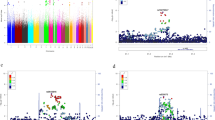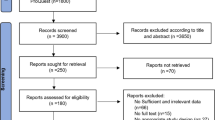Abstract
Background
Single-nucleotide polymorphisms (SNPs) of several genes are linked to the etiopathogenesis of Kawasaki disease (KD). Association of SNPs of inositol 1,4,5-triphosphate-3-kinase C (ITPKC) gene with susceptibility to KD and coronary artery lesions (CALs) has been observed in children of certain ethnicities, but not from others. The present study was planned to explore this genetic association in the North Indian cohort.
Methods
Fifty children with KD and 50 age- and sex-matched controls were studied for two SNPs (rs28493229 and rs2290692) of the ITPKC gene using polymerase chain reaction and restriction fragment length polymorphism. Findings were confirmed by Sanger sequencing. A meta-analysis was also carried out for GG and CC genotypes of the SNPs.
Results
There was significant association between KD susceptibility and CG + GG genotype of rs2290692 (p = 0.015, odds ratio = 4.1, 95% confidence interval = 1.38–13.83). None of the single alleles or genotypes of the SNPs of ITPKC were, however, significantly associated with KD susceptibility. A meta-analysis also did not show any significant association of these SNPs to KD susceptibility.
Conclusions
Our findings suggest that ITPKC gene SNPs (rs28493229 and rs2290692) did not have a significant association with susceptibility to KD in children from North India. Larger multicentric studies incorporating different ethnicities are required to understand the genetic basis of KD.
Impact
-
While SNP rs28493229 of the ITPKC gene is not found to be associated with susceptibility to KD, the combined genotype of SNP rs2290692 is shown to be associated.
-
Impact of ITPKC gene SNP on KD is different across different races and ethnicities. We could find an association of the combined genotype of rs2290692 with it in the Indian population.
-
This study highlights that phenotype and genotypic association of KD varies with ethnicities. Larger multicentric studies are required to reach a conclusion regarding the genetic association of KD.
Similar content being viewed by others
Log in or create a free account to read this content
Gain free access to this article, as well as selected content from this journal and more on nature.com
or
Data availability
All data generated or analysed during this study are included in this published article (and its supplementary information file).
References
McCrindle, B. W. et al. Diagnosis, treatment, and long-term management of Kawasaki disease: a scientific statement for health professionals from the American Heart Association. Circulation 135, e927–e999 (2017).
Singh, S., Vignesh, P. & Burgner, D. The epidemiology of Kawasaki disease: a global update. Arch. Dis. Child. 100, 1084–1088 (2015).
Rowley, A. H. & Shulman, S. T. The epidemiology and pathogenesis of Kawasaki disease. Front. Pediatr. 6, 374 (2018).
Kim, G. B. Reality of Kawasaki disease epidemiology. Korean J. Pediatr. 62, 292–296 (2019).
Jiao, F. et al. The emergence of Kawasaki disease in India and China. Glob. Cardiol. Sci. Pract. 2017, e201721 (2017).
Suresh, N., Varadarajan, V. V. & Ranjith, M. S. Kawasaki disease in south India: a prospective, case-control study. Ann. Trop. Paediatr. 27, 277–283 (2007).
Singh, S. & Aulakh, R. Kawasaki disease and Henoch Schonlein purpura: changing trends at a tertiary care hospital in north India (1993-2008). Rheumatol. Int. 30, 771–774 (2010).
Singh, S. et al. Is Kawasaki disease incidence rising in Chandigarh, North India? Arch. Dis. Child. 96, 137–140 (2011).
Singh, S. & Bhattad, S. Kawasaki disease incidence at Chandigarh, North India, during 2009-2014. Rheumatol. Int. 36, 1391–1397 (2016).
Dahdah, N. Not just coronary arteritis, Kawasaki disease is a myocarditis, too. J. Am. Coll. Cardiol. 55, 1507–1508 (2010).
Reddy, M. et al. Pro-brain natriuretic peptide (ProBNP) levels in North Indian children with Kawasaki disease. Rheumatol. Int. 36, 551–559 (2016).
Dionne, A. & Dahdah, N. Myocarditis and Kawasaki disease. Int. J. Rheum. Dis. 21, 45–49 (2018).
Eleftheriou, D. et al. Management of Kawasaki disease. Arch. Dis. Child. 99, 74–83 (2014).
Routhu, S. K. et al. Assessment of endothelial dysfunction in acute and convalescent phases of Kawasaki disease using automated edge detection software: a preliminary study from North India. J. Clin. Rheumatol. 27, 143–149 (2019).
Newburger, J. W. et al. The treatment of Kawasaki syndrome with intravenous gamma globulin. N. Engl. J. Med. 315, 341–347 (1986).
Mori, M. et al. Meta-analysis of the results of intravenous gamma globulin treatment of coronary artery lesions in Kawasaki disease. Mod. Rheumatol. 14, 361–366 (2004).
Burgner, D. & Harnden, A. Kawasaki disease: what is the epidemiology telling us about the etiology? Int. J. Infect. Dis. 9, 185–194 (2005).
Holman, R. C. et al. Racial/ethnic differences in the incidence of Kawasaki syndrome among children in Hawaii. Hawaii Med. J. 69, 194–197 (2010).
Kumrah, R., Vignesh, P., Rawat, A. & Singh, S. Immunogenetics of Kawasaki disease. Clin. Rev. Allergy Immunol. https://doi.org/10.1007/s12016-020-08783-9 (2020).
Berridge, M. J. Inositol trisphosphate and calcium signalling mechanisms. Biochim. Biophys. Acta 1793, 933–940 (2009).
Onouchi, Y. et al. ITPKC functional polymorphism associated with Kawasaki disease susceptibility and formation of coronary artery aneurysms. Nat. Genet. 40, 35–42 (2008).
Peng, Q. et al. Single-nucleotide polymorphism rs2290692 in the 3’UTR of ITPKC associated with susceptibility to Kawasaki disease in a Han Chinese population. Pediatr. Cardiol. 33, 1046–1053 (2012).
Chi, H. et al. ITPKC gene SNP rs28493229 and Kawasaki disease in Taiwanese children. Hum. Mol. Genet. 19, 1147–1151 (2010).
Kuo, H. C. et al. Single-nucleotide polymorphism rs7251246 in ITPKC is associated with susceptibility and coronary artery lesions in Kawasaki disease. PLoS ONE 9, e91118 (2014).
Kim, K. Y. et al. ITPKC and SLC11A1 gene polymorphisms and gene-gene interactions in Korean patients with Kawasaki disease. Yonsei Med. J. 59, 119–127 (2018).
Kushner, H. I., Macnee, R. & Burns, J. C. Impressions of Kawasaki syndrome in India. Indian Pediatr. 43, 939–942 (2006).
Singh, S., Gupta, M. K., Bansal, A., Kumar, R. M. & Mittal, B. R. A comparison of the clinical profile of Kawasaki disease in children from Northern India above and below 5 years of age. Clin. Exp. Rheumatol. 25, 654–657 (2007).
Singh, S., Bansal, A., Gupta, A., Kumar, R. M. & Mittal, B. R. Kawasaki disease: a decade of experience from North India. Int. Heart J. 46, 679–689 (2005).
Newburger, J. W. et al. Diagnosis, treatment, and long-term management of Kawasaki disease: a statement for health professionals from the Committee on Rheumatic Fever, Endocarditis, and Kawasaki Disease, Council on Cardiovascular Disease in the Young, American Heart Association. Pediatrics 114, 1708–1733 (2004).
Rodó, X. et al. Tropospheric winds from northeastern China carry the etiologic agent of Kawasaki disease from its source to Japan. Proc. Natl Acad. Sci. USA 111, 7952–7957 (2014).
Dietz, S. M. et al. Dissecting Kawasaki disease: a state-of-the-art review. Eur. J. Pediatr. 176, 995–1009 (2017).
Natividad, M. F., Torres-Villanueva, C. A. T. & Saloma, C. P. Superantigen involvement and susceptibility factors in Kawasaki disease: profiles of TCR Vβ2+ T cells and HLA-DRB1, TNF-α and ITPKC genes among Filipino patients. Int. J. Mol. Epidemiol. Genet. 4, 70–76 (2013).
The International Genome Sample Resource. 1000 Genomes: a deep catalog of human genetic variation. http://www.internationalgenome.org/ (2019).
Yan, Y. et al. Combined analysis of genome-wide-linked susceptibility loci to Kawasaki disease in Han Chinese. Hum. Genet. 132, 669–680 (2013).
Wang, W. et al. The roles of Ca2+/NFAT signaling genes in Kawasaki disease: single- and multiple-risk genetic variants. Sci. Rep. 4, 5208 (2014).
Khor, C. C. et al. Genome-wide association study identifies FCGR2A as a susceptibility locus for Kawasaki disease. Nat. Genet. 43, 1241–1246 (2011).
Lou, J. et al. A functional polymorphism, rs28493229, in ITPKC and risk of Kawasaki disease: an integrated meta-analysis. Mol. Biol. Rep. 39, 11137–11144 (2012).
Sethupathy, P. & Collins, F. S. MicroRNA target site polymorphisms and human disease. Trends Genet. 24, 489–497 (2008).
Yeter, D. & Deth, R. ITPKC susceptibility in Kawasaki syndrome as a sensitizing factor for autoimmunity and coronary arterial wall relaxation induced by thimerosal’s effects on calcium signaling via IP3. Autoimmun. Rev. 11, 903–908 (2012).
Lin, M. T. et al. Clinical implication of the C allele of the ITPKC gene SNP rs28493229 in Kawasaki disease: association with disease susceptibility and BCG acar reactivation. Pediatr. Infect. Dis. J. 30, 148–152 (2011).
Kuo, H. C. et al. ITPKC single nucleotide polymorphism associated with the Kawasaki disease in a Taiwanese population. PLoS ONE 6, e17370 (2011).
Onouchi, Y. et al. ITPKC and CASP3 polymorphisms and risks for IVIG unresponsiveness and coronary artery lesion formation in Kawasaki disease. Pharmacogenomics J. 13, 52–59 (2013).
Kuo, H. C. et al. A replication study for association of ITPKC and CASP3 two-locus analysis in IVIG unresponsiveness and coronary artery lesion in Kawasaki disease. PLoS ONE 8, e69685 (2013).
Acknowledgements
We wish to thank Prof. Bhavneet Bharti for their help in statistical analysis.
Funding
The authors thankfully acknowledge the Indian Council of Medical Research, New Delhi, India for financial assistance—Thesis Grant No. 3/2/June-2017/PG-Thesis-HRD (50) dated 13 March 2018. The funding agency had no role in study design, data collection and analysis, decision to publish, or preparation of the manuscript.
Author information
Authors and Affiliations
Contributions
D.B.: conception and design, acquisition of data, data analysis, data interpretation, drafting manuscript, editing, and critical revision. R.K.: acquisition of data and data analysis. A.K.: acquisition of data and data analysis. An.K.: concept and design of the study, data interpretation, editing of the draft, and critical revision. P.S.: data interpretation, editing draft, and critical revision. A.R.: design of the study, acquisition of data, and data analysis. S.S.: concept and design of the study, clinical data, editing, critical revision, and approval of the final version.
Corresponding author
Ethics declarations
Competing interests
The authors declare no competing interests.
Consent to participate
Informed written consent is taken from parents of all subjects and controls. An assent was obtained from all children above 7 years of age. This study was approved by Institute Ethics Committee and Institute Thesis Committee and Departmental Review Board.
Consent for publication
Yes.
Additional information
Publisher’s note Springer Nature remains neutral with regard to jurisdictional claims in published maps and institutional affiliations.
Supplementary information
Rights and permissions
About this article
Cite this article
Bhattarai, D., Kumrah, R., Kaur, A. et al. Association of ITPKC gene polymorphisms rs28493229 and rs2290692 in North Indian children with Kawasaki disease. Pediatr Res 92, 1090–1098 (2022). https://doi.org/10.1038/s41390-021-01830-x
Received:
Revised:
Accepted:
Published:
Issue date:
DOI: https://doi.org/10.1038/s41390-021-01830-x



